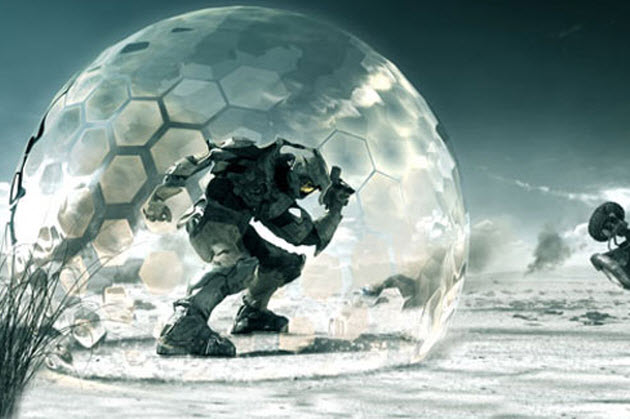 Every year, we get a glimpse of the video game industry’s future at E3. The trade show drew more than 45,000 attendees to Los Angeles last week, to gawk at the show’s 35,000 displays.
Every year, we get a glimpse of the video game industry’s future at E3. The trade show drew more than 45,000 attendees to Los Angeles last week, to gawk at the show’s 35,000 displays.
With that much stimulation, my eyes and memory fail me sometimes, but after 16 or so years covering E3, my sensors wake up and trigger my capacity for pattern recognition.
Over four days, we got a chance to see the games that most people won’t encounter until a year or so from now, and I got a sense of the trends that will shape the coming year in video games.
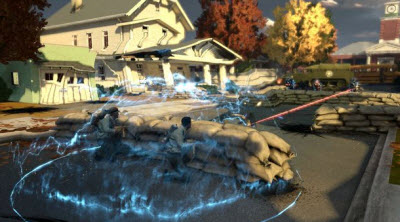 1. The video game industry is protected by super plexiglass bubble shield. Just when it seems like something is going to kill the video game industry — like the great recession of 2008-2009 — something always saves it. Like Master Chief (pictured top) in the Halo series, the industry seems like it can make itself immune during E3 to all of the disruption that is happening around it.
1. The video game industry is protected by super plexiglass bubble shield. Just when it seems like something is going to kill the video game industry — like the great recession of 2008-2009 — something always saves it. Like Master Chief (pictured top) in the Halo series, the industry seems like it can make itself immune during E3 to all of the disruption that is happening around it.
The traditional console video game is threatened from all directions: Zynga’s Facebook games are eating at the audience. Apple’s iPhones and iPads are stealing customers. Free-to-play online games are killing subscription games. And Android smartphones are dispensing with the need to buy new handheld game players. And Apple tried to steal the show’s thunder by scheduling its Worldwide Developer Conference at the same time.
But this year there was a kind of “What, Me Worry?” attitude about all of that. The big video game publishers showed off their big budget games that were like summer blockbuster movies. And they were awesome enough to make us all believe, at least during the show itself, that nothing could eat away at the revenues of the big games.
The game publishers came up with one potential blockbuster after another: BioShock Infinite, Call of Duty Modern Warfare 3, Battlefield 3 and many others. With such games, it’s no wonder that the social and mobile game companies don’t come to the show. There’s no way they can compete against the black hole that sucks in all the attention of gamers when these blockbuster games debut. Call of Duty alone will likely generate a billion dollars in revenue.
This makes me think that the video game industry is one of those beings from our imagination that is both thriving and dying at the same time. One part of the industry has been devastated by free games. But the other part is vibrant with life. As long as the game industry keeps driving forward, it should be able to survive. This doesn’t mean that the disruptors have failed. They’re just creeping along unnoticed for now. One example: Bigpoint, Germany’s maker of free-to-play online games, has more than 190 million registered users. Those gamers probably aren’t playing as many $60 console games anymore. But the big giants of consoles haven’t been stung yet.
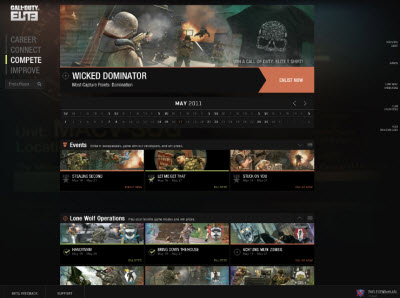 2. Hardcore games are learning lessons from social gaming. The big game publishers are not standing still, like dinosaurs struck by the ice age. Each one of them has learned lessons from the social gaming upstarts and is adapting.
2. Hardcore games are learning lessons from social gaming. The big game publishers are not standing still, like dinosaurs struck by the ice age. Each one of them has learned lessons from the social gaming upstarts and is adapting.
Activision Blizzard was very quiet on the social front until it announced Call of Duty Elite, a social network for hardcore Call of Duty gamers. This network is manna from heaven for hardcore game fans who want to know all of their stats about their multiplayer games in real-time so they can figure out how to get the drop on their rivals. This social network will like take the engagement of Call of Duty Modern Warfare 3 to the next level, making it almost impervious to assault by rivals.
While Activision Blizzard will charge a premium fee for Call of Duty Elite, rival EA will make its Battlefield 3 social network and multiplayer play available for free. The improvement in engagement should more than offset the costs of creating the social network, from EA’s point of view. Meanwhile, there were plenty of other examples of how the big game companies are learning from the startups. Ubisoft is preparing a high-end free-to-play game, Ghost Recon Online, while THQ is launching its Facebook virtual world, Margaritaville. On the company-wide level, EA’s Origin digital distribution network will also have social discovery features that will get fans of one game to try out another. Many game publishers are launching Facebook and mobile versions of their core games.
 Yves Guillemot, chief executive of Ubisoft, (pictured right) said at a press dinner that Ubisoft’s future games will have the ability to play with friends via asynchronous modes. That is, Ubisoft games will have features such as sending a challenge to a friend to beat your high score and the friend can try to best your challenge at a time of the friend’s own choosing. In short console games are incorporating the lessons of social.
Yves Guillemot, chief executive of Ubisoft, (pictured right) said at a press dinner that Ubisoft’s future games will have the ability to play with friends via asynchronous modes. That is, Ubisoft games will have features such as sending a challenge to a friend to beat your high score and the friend can try to best your challenge at a time of the friend’s own choosing. In short console games are incorporating the lessons of social.
3. The long cycle is saving video game publishers. The previous console cycle lasted as little as four years, with the Xbox debuting in the fall of 2001 and the Xbox 360 debuting in 2005. The current cycle will last at least six years — at least for Nintendo, and perhaps longer for the other consoles.
That is saving video game publishers in a big way. It allows them to reap the lessons of their earlier games and publish new sequels on game engines that have already been amortized. This allows the companies to generate a lot of revenue from three games on a single generation of technology — such as Uncharted: Drake’s Fortune, Uncharted 2: Among Thieves, and the upcoming Uncharted 3: Drake’s Deception on the PlayStation 3 — without having to totally reinvent their game engines every time. Ubisoft has done this with Assassin’s Creed, Microsoft and Epic have done it with Gears of War, and Activision Blizzard has done it with Call of Duty Modern Warfare.
I say that these big games on long-lasting platforms saved the game industry because they got hit with a tsunami during the financial crisis of 2008. They were also hit by the disruptive forces of free social and mobile games, as mentioned above, and by a Cambrian explosion in online gaming. The result of that tsunami might have been a lot of takeover and consolidation. Tencent, which has a $50 billion market valuation in China, might have picked up one of the major Western game publishers for a song. That could still happen, but the fact that it didn’t shows that the video game industry is making it through a time of disruption much better than the film or music industries have with the onset of the digital online era.
The only thing the industry has to be wary about is that some companies, such as OnLive, are perfectly happy to see the current consoles sit back in relax while they try to disrupt the business and get rid of consoles altogether.
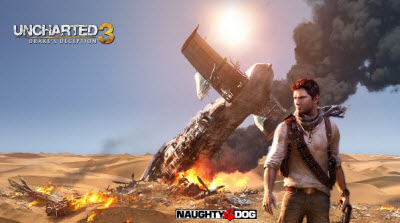 4. Version 3 games can be the best and biggest yet. As we mentioned above, games like Uncharted 3 can reflect the collective learning of games that came before them. The audiences for these games, such as Assassin’s Creed, continues to grow thanks to increasing awareness and the spreading of fan enthusiasm. The number of consoles sold is also giving the game publishers a huge installed base into which they can sell their games. That’s why it makes sense for game publishers such as Electronic Arts to cut back on the number of titles they publish and double down their investments on the ones that have had the most success.
4. Version 3 games can be the best and biggest yet. As we mentioned above, games like Uncharted 3 can reflect the collective learning of games that came before them. The audiences for these games, such as Assassin’s Creed, continues to grow thanks to increasing awareness and the spreading of fan enthusiasm. The number of consoles sold is also giving the game publishers a huge installed base into which they can sell their games. That’s why it makes sense for game publishers such as Electronic Arts to cut back on the number of titles they publish and double down their investments on the ones that have had the most success.
This doesn’t mean that investments in new original games are a bad idea. It just raises the bar for what those original games have to achieve. On the positive side, publishers may be more willing to invest in new intellectual properties even if the first game only breaks even. That’s because they know the game’s sequel (unlike a movie) can often do better than the original. EA saw that happen with DeadSpace, which was a mild hit for EA. DeadSpace 2, on the other hand, sold twice as much as the original.
5. The Wii U could make game economics better. Eric Hirshberg, president of Activision Publishing, said in an interview it looks like it will be possible to make first-person shooter games and other graphically demanding games on the new Nintendo console. It’s not clear exactly how that’s going to happen just yet. But Nintendo will benefit if a wider range of games are published on its upcoming game console.
On top of that, game publishers can benefit if they can make a game and publish it to four platforms — the Wii U, PC, PS 3, and Xbox 360 — rather than just three. The Wii was such an anomaly with its standard definition visuals that many of the publishers skipped making games for it. That hurt Nintendo, but it also meant the publishers didn’t make as much money as they could have.
Now the publishers can include the Wii and a whole new set of customers when they make their newest games. At least they can until Microsoft and Sony come up with brand new consoles themselves.
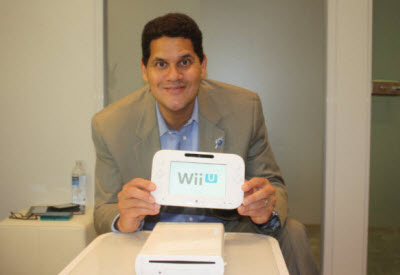 6. The debate over graphics continues. In games like Battlefield 3, having better graphics than the other games out there matters a whole lot for the acceptance of the game. First-person shooter fans are extremely demanding when it comes to eye candy. But in role-playing games such as Star Wars: The Old Republic, which looked pretty weak graphically, other things matter more. For instance, users want the ability to do all of the social gaming functions — like going on raids with large groups of players — as they can in World of Warcraft. Even if the Old Republic doesn’t have stellar graphics, it might be a big success.
6. The debate over graphics continues. In games like Battlefield 3, having better graphics than the other games out there matters a whole lot for the acceptance of the game. First-person shooter fans are extremely demanding when it comes to eye candy. But in role-playing games such as Star Wars: The Old Republic, which looked pretty weak graphically, other things matter more. For instance, users want the ability to do all of the social gaming functions — like going on raids with large groups of players — as they can in World of Warcraft. Even if the Old Republic doesn’t have stellar graphics, it might be a big success.
The debate over graphics quality became sharper as Nintendo announced its Wii U. The chips inside the device include a multicore IBM chip and an Advanced Micro Devices Radeon graphics chip. These 45-nanometer chips use current generation technology, or the equivalent of the technology used in high-end PCs today. (Engadget thinks it knows how good the specifications are, but Nintendo isn’t confirming anything). By 2012, this level of graphics might not be good enough.
Nintendo hasn’t said whether its graphics are going to be better than the PS 3’s or the Xbox 360s. It only says it can do 1080p high-definition graphics, which will make the Wii U much more competitive on graphics than the Wii. But it will be a short leap for Sony and Microsoft to make it they want to launch new consoles and leave Nintendo behind in the dust.
Reggie Fils-Aime, president of Nintendo of America, acknowledged that the Wii didn’t have the best graphics last time, but he noted that, 86 million units later, Nintendo’s choice to spend money on the motion-sensing system was a wise choice. Nintendo went with a minimalist hardware design again this time. Indeed, its Wii U tablet controllers don’t have memory or processors. That will keep Nintendo’s costs low so that it can charge a lower price for its machine. But it’s risky, considering rivals can create more powerful machines.
 7. Gamers will get to move and touch more. Microsoft’s Kinect motion-sensing system doesn’t always work that great, but it’s getting better and game makers are finding more uses for it. With Star Wars Kinect, Microsoft is graduating from casual games and moving on to hardcore games. One of the coolest new uses for Kinect was with Mass Effect 3, which allowed the player to shout voice commands at companions rather than press a bunch of buttons to get the companions into the right position.
7. Gamers will get to move and touch more. Microsoft’s Kinect motion-sensing system doesn’t always work that great, but it’s getting better and game makers are finding more uses for it. With Star Wars Kinect, Microsoft is graduating from casual games and moving on to hardcore games. One of the coolest new uses for Kinect was with Mass Effect 3, which allowed the player to shout voice commands at companions rather than press a bunch of buttons to get the companions into the right position.
Sony also showed that its Move controller could come in handy with the NBA 2K12 game where you can control the action in the game with both button-mashing and by pointing the controller at a spot on the screen. Nintendo brought the magic of touch that Apple pioneered on the iPhone and iPad to the console with the Wii U tablet controller, and the PS Vita brought touch to the handheld with both a rear touchscreen and a front touchscreen.
The right approach seems to be to create a combination of a traditional game controller and a motion or voice-sensing system. That’s how these new user interfaces will become useful in the hardcore games.
 8. Franchise reboots are fashionable. The fantastic-looking reboot of Tomb Raider shows what can be done to revive a dead video game franchise when you double-down on the investment in game quality. Electronic Arts tried this with mild success (millions sold, but didn’t beat Call of Duty) on Medal of Honor, while Warner Bros. Interactive Entertainment also had some success with Mortal Kombat.
8. Franchise reboots are fashionable. The fantastic-looking reboot of Tomb Raider shows what can be done to revive a dead video game franchise when you double-down on the investment in game quality. Electronic Arts tried this with mild success (millions sold, but didn’t beat Call of Duty) on Medal of Honor, while Warner Bros. Interactive Entertainment also had some success with Mortal Kombat.
In addition to Tomb Raider, the show also had other examples of reboots with Sonic Generations and Deus Ex Human Revolution. In all of the reboots, there’s a common thread. The game developers have to invest heavily in creating the best worlds, most interesting characters, and fun game play. Sometimes it works. Sometimes it doesn’t. But these projects always have a built-in fan base.
9. The video game industry just can’t keep secrets — In the age of the internet, you can’t keep secrets. Microsoft managed to leak out everything that it was going to announce, accidentally, when its own web site spilled the beans. By the time the company had its press conference, everyone knew about Halo Combat Evolved Anniversary and Halo 4. It’s always nice when a company, in Steve Jobs-like fashion, saves “one last thing” as a surprise. But Microsoft didn’t even have that because of the Halo 4 leak.
Sony showed off its PS Vita handheld to the press ahead of time, leaving only the price of $249 as its big revelation. And Nintendo’s big Wii U announcement was preempted by a leak about a month before the show. Hackers are also making sure they can steal as many secrets as they can.
The trade-off is always like this. Game console makers have to tell third-party developers how to make games for their new upcoming consoles. But once they do so, the leaks spread like wildfire. For companies, that means you have to operate on the assumption that everything you do will eventually become public.
 10. Cross-platform is cool. Big companies have talked about marrying their platforms for a long time. But now it’s happening in clever ways. Sony’s Ruin game for the PS Vita, the upcoming Sony handheld, can run across platforms. You can save a game on the PS Vita and then wirelessly synchronize it with your PlayStation 3. Then you can pick the game up with the PS 3 in the same spot. It’s also interesting you can play some Android games (via the PlayStation suite) on the PS Vita.
10. Cross-platform is cool. Big companies have talked about marrying their platforms for a long time. But now it’s happening in clever ways. Sony’s Ruin game for the PS Vita, the upcoming Sony handheld, can run across platforms. You can save a game on the PS Vita and then wirelessly synchronize it with your PlayStation 3. Then you can pick the game up with the PS 3 in the same spot. It’s also interesting you can play some Android games (via the PlayStation suite) on the PS Vita.
It was also interesting to see CCP Games marry its galaxy-wide strategy game Eve Online with a first-person shooter game called Dust 514. Microsoft is also marrying its Xbox Live service with its Windows Phone 7 operating system, and it is starting to experiment with using Windows Phone 7 smartphones as controllers for the Xbox 360.
11. Helicopters are evil. Last year, Uncharted 2: Among Thieves had a helicopter as a villain in a big way. It was always coming down to shoot at you while you were armed with little more than a machine gun. After many annoying appearances, you could eventually swat it away with rocket launchers. A lot of games repeated the evil helicopter theme, including Need for Speed The Run, where a police helicopter chases you both when you’re on foot and when you’re in a car. The bad guy helicopters are plentiful in Call of Duty Modern Warfare 3 and in Far Cry 3.
There’s something about being pursued by a giant flying thing with an unfair advantage. I’m joking around here of course. But it’s kind of ironic that a mechanical monstrosity is the enemy, now that we’ve run out of villains. The Cold War is over. The North Koreans have been done (in THQ’s Homefront game). Osama bin Laden is dead. Aliens have been overdone. Where are we going to get our new enemies?
VentureBeat's mission is to be a digital town square for technical decision-makers to gain knowledge about transformative enterprise technology and transact. Learn More

